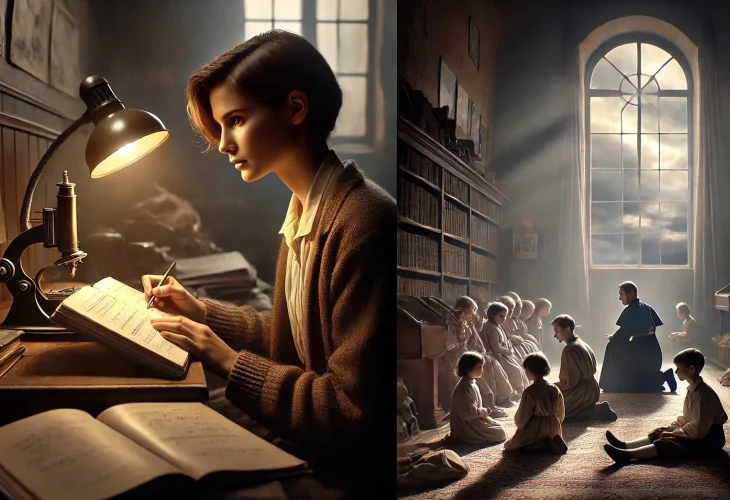Personal Stories
From Questions to Clarity: How Paul Blanc Found His Way to Judaism
While teaching in Casablanca, Paul met a kind and wise rabbi who helped him discover the beauty of Torah—and it changed his life forever.

Paul Blanc started out as a physics student in Marseille, in southern France. Then World War II broke out and everything changed. As a religious Christian, Paul was close with a kind and brave priest named Father André Trocmé. This priest saved thousands of Jewish children by hiding them in small villages. Some of his helpers even gave their lives for this holy mission. One of the children saved went on to become a famous mathematician. Another grew up to be a wealthy man who later donated his fortune to the children of the town that had protected him.
When the war ended, Paul found himself full of questions. How could such terrible things happen in a world created by a loving God? He left science behind and went to study theology—religion and belief—at a top university in Paris. But what he found there only disappointed him more. Many of his professors didn’t take the Holocaust seriously, and some even repeated old, hurtful beliefs about the Jewish people.
Then, Paul received a job offer to teach philosophy in Casablanca, which was under French rule at the time. While there, he met Rabbi Shalom Messas, the chief rabbi of the city (and later chief rabbi of Jerusalem). Through this meeting, Paul had his first real encounter with Torah and mitzvot—and it touched his heart deeply.
He decided to convert to Judaism. To explain why, he wrote a 15-page letter to Rabbi Messas. The rabbi was so moved by it that he used it as an example for other rabbis who guide people in conversion. “If we’re going to bring people into the Jewish people,” he said, “this is how it should be done.”
Paul took on a new Hebrew name: Avraham Lavani (Lavani is based on “Blanc,” which means “white” in French). He married a Jewish woman in Morocco, and the couple later moved to Jerusalem. There, Avraham earned a PhD and was also ordained as a rabbi by Rabbi Messas himself.
His wife once shared a sweet memory. A friend invited her on a group trip with her brother—who turned out to be Avraham’s sister. They ended up joining a large crowd of Jews at the resting place of a great rabbi. She was amazed when Avraham, who she still knew as a non-Jew, read the Hebrew writing on the wall and spoke about Jewish ideas she hadn’t even learned yet.
In Jerusalem, Rabbi Avraham Lavani wrote a powerful book called “The Return to Zion – A Banner for the Nations.” It became a bestseller and inspired many people—Jewish and non-Jewish alike. In it, he described the unique history of the Jewish people as proof of God’s truth and the beauty of the Torah.
He wrote honestly about the turning point in his life:
“The Holocaust ended my youth... When we learned what really happened in the concentration camps, we were shaken to the core. I felt ashamed—not as a victim, but as someone who hadn’t been one. It shook my whole worldview. If this could happen, what did it say about our culture? About everything I thought I knew?”
Later in the book, he wrote:
“Western democracy still feels like a kind of slavery. So many people today are trapped—politically, financially, emotionally. The Torah calls Egypt Mitzrayim, which comes from the word for ‘narrowness’ or ‘limitation.’ That same narrowness still exists today, just in new forms. A world without God is a world without breath.”
Rabbi Avraham Lavani passed away in 1986 and was laid to rest on the Mount of Olives in Jerusalem, leaving behind a powerful story of searching, questioning—and ultimately, coming home.

